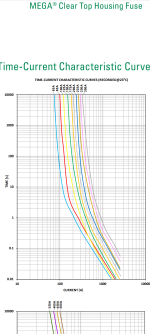gilbertojr78 said:
Just found the datasheet.
Its a high voltage step down.
What was the part number? Might be helpful for others who run into the same situation
Barncat said:
throttle cutouts kicked in, likely due to heat.
These units have a few reasons they will cut out. Probably not throttle related.
Soft:
High ESC temp, high motor temp, low voltage. When any of these conditions exist based on the current settings, the unit will slowly reduce the amount of power to prevent these things from going past the set limit. It won't feel like an abrupt cut-out, but rather a gradual reduction of power like an old NiCad power tool running low on batteries.
Hard:
Faults. Over voltage and over absolute current are the most common. Usually these are related to bad settings. These faults will abruptly cut power to the motor for half a second (default, this can be adjusted under motor -> general -> advanced -> fault stop time.) before operating normally again.
Barncat said:
debug tab shows no fault codes
You can type "faults" in the VESC Dev Tools -> VESC terminal section. All faults are cleared when the unit is powered off. So you could go for a longish ride, come back, hook it up to USB while it's still connected to the battery and see if any faults were logged during the ride.
Barncat said:
if you mean trying to record data thru Android while actually riding, that whole process is over my head.
Simplest answer is to buy a metr bluetooth module from shop.metr.at, plug it in to the ESC's COMM port, download the android metr app, and go for a ride. It will show you real-time data like current, watts, voltage, wh/mi, faults, etc. It will also log it so it will look something like this field weakening thermal test ride I did on the hacked firmware.
https://metr.at/r/CFbmc
You can also use the metr bluetooth module with the official VESC android app which supports real-time and logging as well, but without the nice web interface.
The harder but cheaper ($10) way is to buy an NRF51822 or NRF52840 module on ebay/ali, flash firmware from the VESC github onto it, wire it up and use it with the official app. I've done both, but the metr is worth the extra price especially if you can find one used on the forums.







